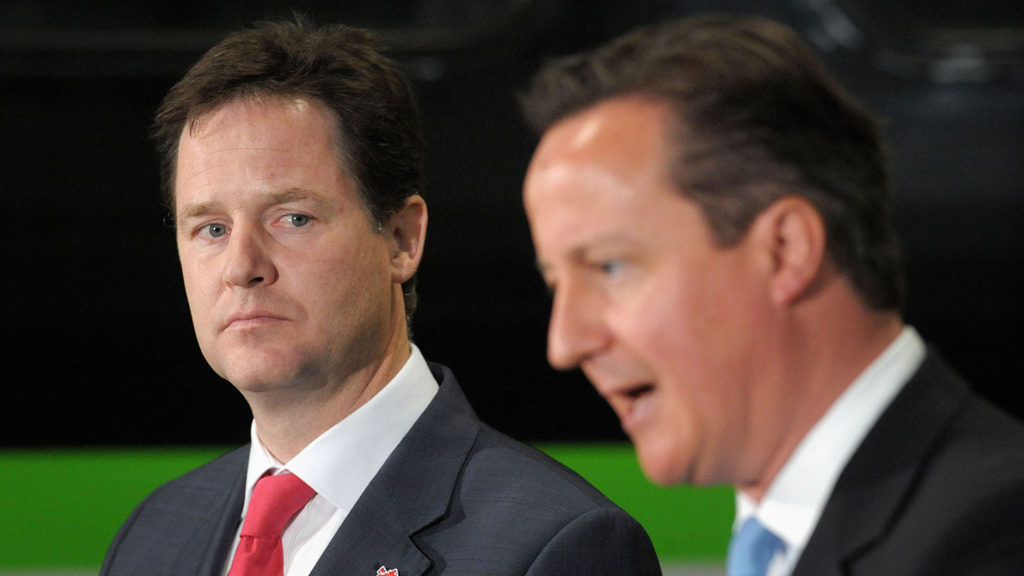Coalition’s rocky road – two and a half years on
Prime Minister David Cameron and his deputy, Nick Clegg, today renew their vows in a new show of unity, two and a half years after the rose garden press conference.

But despite promises that the coalition is “steadfast”, there have been noticeable disagreements since the union was formed following the May 2010 general election.
The first stumbling block came just a few months later, in December, when the Lib Dems were forced to backtrack on their pledge to oppose rises in university tuition fees, leading to accusations of betrayal from students nationwide.
All Lib Dem MPs said before the election that they would oppose any rise in tuition fees, although the coalition deal included an agreement to allow them to abstain in any vote on the issue.
Revolt
However the government only just survived the vote when three ministerial aides resigned and 21 Lib Dem MPs rebelled, as the government suffered a serious House of Commons revolt. Abstentions helped slash its majority from 84 to 21.
The Lib Dem Business Secretary Vince Cable later acknowledged the coalition and his party had come through a “difficult test”.
The general public will probably never know how fractious the relationship between the Conservatives and Liberal Democrats actually is behind closed doors, but the most obvious row played out in the public eye was over constitutional reform, just a year after the coalition came into force.
Humiliation
In May 2011, tensions over the voting reform referendum boiled over when Chris Huhne, then energy secretary, directly confronted the prime minister and chancellor across the cabinet table over the “no” campaign’s tactics. Three days later the Lib Dems were humiliated when the alternative vote was overwhelmingly rejected in a national referendum.
In August of the same year, in the face of opposition from backbench Tory MPs, the prime minister withdrew his support for reform of the House of Lords. In retaliation, Mr Clegg said the Lib Dems would not support the boundary review, which would have seen the number of MPs cut from 650 to 600.
The scuppering of Lords reform, a key plank of the coalition, was seen as particularly damaging for Mr Clegg as it fuelled the perception that the Liberal Democrats had gained little from going into government with a party that was not their ideological ally.
Later in 2011 Mr Clegg made public further tensions when he criticised the prime minister’s decision to veto a European Union treaty. He said the decision was “bad for Britain”, claiming it would leave Britain isolated.
Conflict
A more recent conflict came over the Leveson report, which saw the Liberal Democrat leader siding with Labour leader Ed Miliband, who said it was an insult to victims of phone hacking.
The prime minister and his deputy marked an historic first in the Commons when they gave separate statements in response to the inquiry by Lord Justice Leveson. Mr Clegg said the report’s proposals for reform could be “proportionate and workable” while the prime minister backed away from statutory regulation of the press.
And less than a month ago further tensions emerged between the Lib Dems and Tories over plans to introduce gay marriage. Mr Clegg said he expected his MPs to offer the government’s legislation a “thumping vote of support” despite vocal opposition from backbench Conservatives
But despite the disagreements, and the acknowledgement by both parties that they will fight the next election on their own terms, there have been some successes.
Tax cuts
Cameron and Clegg have appeared united on moves to introduce tax cuts for low earners, pupil premiums to raise achievement for the disadvantaged, and steps towards localism to introduce greater powers for local authorities.
And both were today keen to emphasise ways in which they want to move forward together, including reforming pensions, social care, child care, and methods to improve Britain’s transport network.